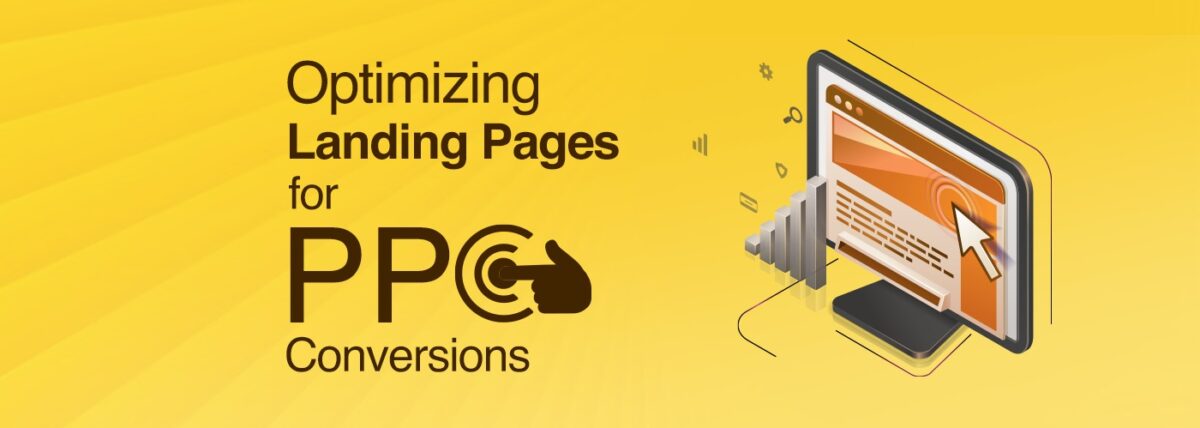Have any Questions?
+ 1800 - 123 456 78
Mail us today
marketum@mail.com
November 16, 2023
admin
No Comments
Optimizing Landing Pages for PPC Conversions
Digital marketing strategy requires that landing page optimisation be mastered for pay-per-click advertising. The subtleties of designing landing pages that convert for PPC campaigns are covered in detail in this guide. Everything from cleverly placed keywords to captivating copy to user-friendly layouts and strong calls to action works together to maximise PPC conversion rates. Knowing how to customise landing pages for pay-per-click advertising maximises return on investment by ensuring that each click results in a worthwhile action. With the help of carefully designed, high-converting landing pages, marketers can better position their PPC campaigns in the cutthroat world of digital advertising.
Optimising PPC performance requires creating landing pages that intuitively translate clicks into valuable interactions. To improve relevance, landing page content must be strategically integrated with keywords. A user-friendly design combined with compelling and engaging content lets visitors move through the conversion funnel with ease. Calls to action placed strategically encourage the intended user behaviour. Marketers can maximise the return on their advertising investment and boost conversion rates by optimising landing pages for PPC. This guide acts as a roadmap, providing insights into the nuances of designing landing pages that are specifically optimised for PPC success in the constantly changing field of digital marketing.
Why is Landing Page Optimisation Crucial?
When it comes to converting landing pages for PPC campaigns, landing page optimisation is crucial to digital marketing. Its direct effect on the return on investment (ROI) for paid advertising efforts is what makes it significant.
First of all, a PPC-optimized landing page guarantees alignment with user intent. When keywords are strategically incorporated, relevance is increased and visitors with particular search queries are drawn in. By promoting a smooth user experience, this alignment lowers bounce rates and raises conversion rates.
Secondly, the persuasive power of design and content is maximised on an optimised landing page. An intuitive layout combined with clear, compelling messaging leads users on a path that leads to the desired action. The optimisation makes sure there is no friction on the path from click to conversion, whether it be a purchase, sign-up, or download.
One distinguishing feature of an optimised landing page is the thoughtful positioning of calls-to-action (CTAs). CTAs purposefully nudge users to complete the desired action, which could be buying something, completing a form, or interacting with the content. The conversion rate is greatly impacted by this deliberate design, which transforms a meaningless click into an engaged engagement.
Furthermore, in the PPC ecosystem, a better Quality Score is a result of an optimised landing page. Relevance and user satisfaction—factors that are intrinsically linked to landing page optimization—are rewarded by search engines. Ad rankings are enhanced by a higher Quality Score, which can also result in lower costs per click, allowing the advertising budget to be stretched even further.
To put it simply, landing page optimisation for PPC is an essential tactic rather than just a recommended practice. It optimises the return on advertising investment, improves user experience, and sets up brands for success in the cutthroat world of digital marketing, where click-to-conversion happens quickly and decisively.
How an optimised landing page garners PPC conversions?
A Pay-Per-Click (PPC) campaign’s success in the ever-changing world of digital advertising depends on factors beyond just selecting the right keywords and placing a competitive bid. When people click on your advertisement and land on a carefully designed, optimised landing page, that’s when the real magic happens. Let’s explore how obtaining PPC conversions depends on having an optimised landing page.- Pertinence via Keywords:
- Content Customised to User Intent:
- Simple and clear messaging:
- Designing Intuitively for User Experience:
- Calls to Action (CTAs) that Persuade:
- Optimising for Mobile:
- A/B Testing for Ongoing Development:
